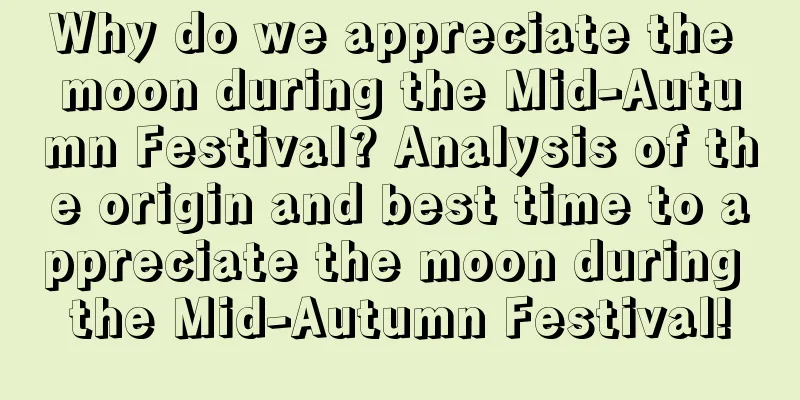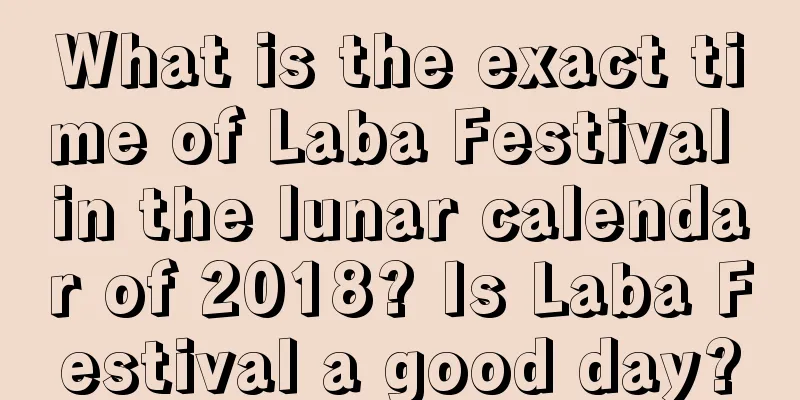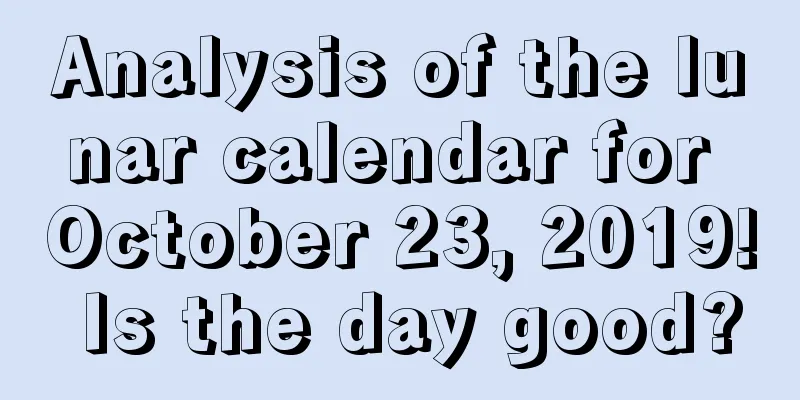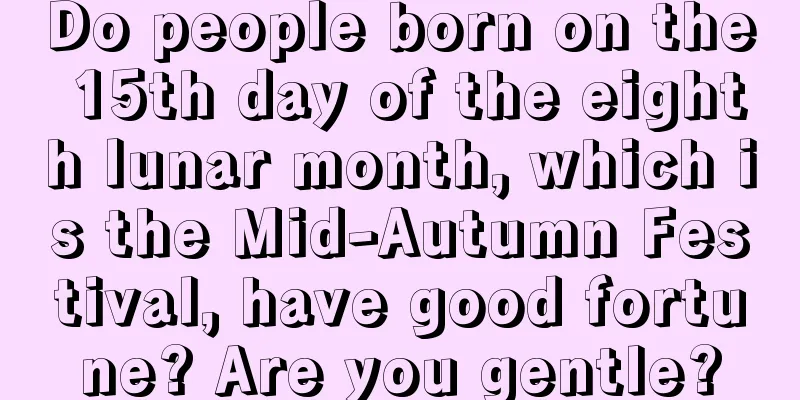What is the origin of the Mid-Autumn Festival? How did people in different dynasties in ancient times celebrate the Mid-Autumn Festival?
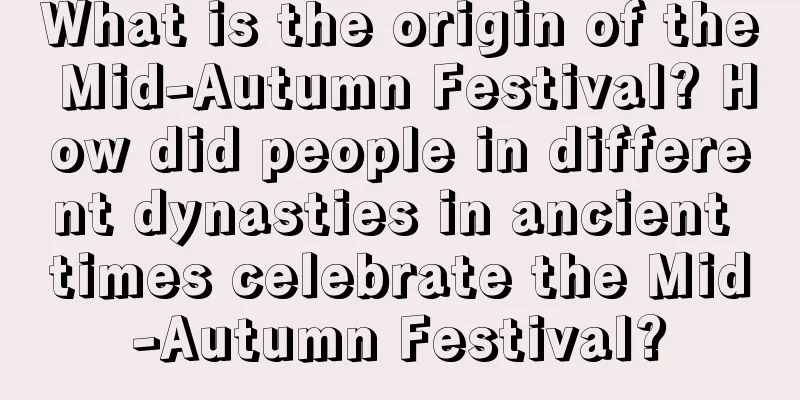
The Mid-Autumn Festival is known as one of China's four major traditional festivals, along with the Dragon Boat Festival, the Spring Festival and the Tomb-Sweeping Day. So, what is the origin of the Mid-Autumn Festival? How did people in different dynasties in ancient times celebrate the Mid-Autumn Festival? The eighth month of the lunar calendar is also known as Guiyue, Zhuangyue, Zhongqiu, Nangong, and Zhongshang. Let’s learn with Shuimoxiansheng.com what we need to pay attention to in this special eighth month of the lunar calendar in 2020!What is the origin of the Mid-Autumn Festival?The Mid-Autumn Festival originated from the ancient worship of the moon and has a long history.The word "Mid-Autumn" was first seen in "The Book of Rites of Zhou". "The Book of Rites·Monthly Ordinances" said: "In the middle of autumn, people take care of the elderly and eat porridge." According to the ancient Chinese calendar, August 15th of the lunar calendar is in the autumn of the year and mid-August, so it is called "Mid-Autumn Festival". In addition, in the four seasons of the year, each season is divided into three parts: "Meng, Zhong, and Ji", so the second month of autumn is named "Zhongqiu". It was not until the early Tang Dynasty that the Mid-Autumn Festival became a fixed festival. There are still mythological legends among the people such as "Wu Gang cutting the cassia tree and Chang'e flying to the moon". How did people in different dynasties in ancient times celebrate the Mid-Autumn Festival?"Moon Worship" during the Mid-Autumn Festival in the Tang DynastyThe origin of the Mid-Autumn Festival is closely related to the romantic legend of Emperor Xuanzong of Tang Dynasty's visit to the Moon Palace: According to legend, on the night of August 15th of a certain year, Emperor Xuanzong of Tang Dynasty was offering sacrifices to the moon in the palace, and a Taoist priest performed a ritual, which turned the walking stick in his hand into a silver bridge in the sky, and then he stepped into the Moon Palace. But on the plaque of the gate tower was inscribed "The Palace of Guanghan Qingxu". Under the tall osmanthus tree at the gate, a white rabbit was pounding medicine. In the palace, Chang'e and other fairies were dancing to the accompaniment of melodious music. After Xuanzong returned from the Moon Palace, he ordered people to sort out the dance music he had secretly memorized and named it "霓娲羽衣曲". The reason why the Moon Palace is called "Guanghan Palace" is also related to this legend. In addition to appreciating the moon, tasting mooncakes has gradually become a folk symbol of the Mid-Autumn Festival. Mooncakes originated in the Tang Dynasty as a military celebration food. During the reign of Emperor Gaozu of Tang, General Li Jing conquered the Huns and won the battle, returning victorious on the 15th day of the eighth month. At that time, some Turpan businessmen presented cakes to the Tang emperor to celebrate his victory. Emperor Gaozu Li Yuan took the gorgeous cake box, took out the round cake, pointed to the bright moon in the sky and said with a smile: "We should invite the toad to eat the Hu cake." After that, he distributed the cake to his ministers to taste together. From then on, there was a custom of eating cakes during the Mid-Autumn Festival. At that time, wealthy families would usually set up a large incense table to worship the moon during the Mid-Autumn Festival. Round cakes, watermelons, apples, grapes and other offerings were all available. Among them, round cakes and watermelons were absolutely indispensable. The more sophisticated families would even cut the watermelon into a lotus shape for offering. Mid-Autumn Festival Begins in the Northern Song Dynasty The term "Mid-Autumn Festival" first appeared in "Dream of the Southern Song Dynasty" written by Wu Zimu in the Southern Song Dynasty: "The 15th day of the eighth month is the Mid-Autumn Festival. This day is exactly the middle of the three autumns, so it is called 'Mid-Autumn Festival'." In addition to inheriting the Tang Dynasty custom of women worshipping the moon during the Mid-Autumn Festival, the Song Dynasty also had a more chic activity called "playing with the moon." In the "Mid-Autumn Festival" entry in "Dongjing Menghualu" by Meng Yuanlao of the Northern Song Dynasty, it is said that "On the night of Mid-Autumn Festival, the rich families decorate their pavilions and terraces, while the common people scramble to occupy restaurants to enjoy the moon." The royal family at that time would also hold a "Mid-Autumn Festival Gala". Ordinary people would not rest early, even children would not sleep. "Children in the neighborhood played all night long. The night market was crowded until dawn." During the Southern Song Dynasty, "playing with the moon" became even more lively and almost crazy. Wu Zimu once wrote about the Mid-Autumn Night in Lin'an in detail: "At this time, the golden wind is refreshing, the jade dew is cool, the red osmanthus is fragrant, and the silver moon is shining. Princes and sons of the rich and powerful families all climb up the steep tower to enjoy the moon from the balcony, or open a large pavilion, set up a tortoise-shaped banquet, play the zither and harp, drink wine and sing, and predict the joy of the night. Even the families who sell food will climb up the small moon-lit platform to arrange a family banquet and gather their children to celebrate the festival. On this night, the streets are busy with business until the fifth drum, and tourists who enjoy the moon dance in the market until late at night." The greatest contribution of the Song Dynasty to the Mid-Autumn Festival was to give it the connotation of "reunion". Later, the Mid-Autumn Festival was regarded as the "Family Reunion Festival", which originated in the Northern Song Dynasty. In his poem "Water Melody", Su Dongpo, a writer of the Northern Song Dynasty, vividly explained the Northern Song people's understanding of the Mid-Autumn Festival. The birth of "moon cakes" in the Southern Song Dynasty <br /> The origin of moon cakes, according to legend, is that when the Tang Dynasty won the war against the Turks, merchants from the Western Regions presented them with Hu cakes as congratulations. Emperor Li Shimin said with emotion, "We should offer Hu cakes to toads." There is no basis for this statement. Hubing was introduced into the Central Plains during the Han Dynasty and is similar to today's naan. Li Shimin was just saying that the roundness of the Hu Bing was similar to the moon, and it had nothing to do with mooncakes. In fact, the term "moon cake" did not come into being until the Southern Song Dynasty. However, it was a commercial food, had nothing to do with the Mid-Autumn Festival, and was most likely steamed. This was recorded in the book "Wulin Jiushi" from the Southern Song Dynasty. Moreover, steamed mooncakes are still popular in Shandong, Henan and other places. The word "mooncake" already appeared in the book "Dreams of the Southern Song Dynasty" by Wu Zimu in the Southern Song Dynasty. However, it was not until the Ming Dynasty that there was an exact record of eating mooncakes during the Mid-Autumn Festival in "West Lake Sightseeing Guide". Tian Rucheng, a writer of the Ming Dynasty, wrote in "Xihu Youlan Zhiyu": "The 15th day of the eighth month is called Mid-Autumn Festival. People give each other mooncakes to symbolize reunion." Shen Bang, a historian of the Ming Dynasty, described the grand occasion of Mid-Autumn mooncakes in Beijing in "Wan Shu Miscellaneous Notes": "They make cakes of different sizes. The cakes are filled with fruits, and are ingeniously named and shaped. One cake is worth hundreds of coins." The book also introduced the production technology at that time, which had reached a very high level. The mooncakes used for the moon in the Beijing Imperial Palace were "more than a foot in diameter from bottom to top and weighed two kilograms." In ancient times, "bing" was a general term for a type of pasta. For example, noodles were called soup cakes and rope cakes, steamed buns were called steamed cakes and cooked cakes, dumplings were called boiled cakes, and cold noodles were called wet cakes, etc. The ancients needed to use pasta for sacrifices, so it was inevitable to use "cakes" to worship the moon. For example, the Song Dynasty court ate "palace cakes", "small cakes" and "moon cakes" during the Mid-Autumn Festival. During the Yuan Dynasty, a large number of Central Asian technicians entered the Central Plains, making the techniques of making shortcrust and batter more mature and popularized, which promoted the popularization of mooncakes. "Sending mooncakes" became popular in the Ming Dynasty and has had an influence to this day .<br /> Eating mooncakes during the Mid-Autumn Festival became more "elaborate" in the Yuan Dynasty. Tao Zongyi's "Yuanshi Ye Ting Ji" at the end of the Yuan Dynasty recorded the situation of Yuan Wuzong Haishan spending the Mid-Autumn Festival in Yiyou (1309 AD). On the night of the Mid-Autumn Festival, Emperor Wuzong of Yuan and his concubines went boating on the royal Taiye Lake and held a banquet for fun. The food served was quite rich: "They offered dragonfly wing jerky, catfish eaten in the autumn wind, Yuanshuang wine drunk, and lamb eaten in the Huayue Lake". The "eating the lamb of the moon" here means "eating moon cakes". By the Ming Dynasty, "eating mooncakes" had become a fixed custom of the Mid-Autumn Festival. In addition to the name "moon cake", the cakes eaten during the Mid-Autumn Festival are also called "reunion cake" and "tuan cake". The "Jianchang Prefecture Chronicle" of the Zhengde period states that "During the Mid-Autumn Festival, people go up to the tower to enjoy the moon, and often use watermelon and tuan cakes, which also means the full moon." In the Ming Dynasty, new trends emerged in the way ancient Chinese people celebrated the Mid-Autumn Festival. "Moon cakes", which are indispensable today, became a must-have for people to celebrate the Mid-Autumn Festival. The modern custom of sending moon cakes during the Mid-Autumn Festival had already become popular in the Ming Dynasty. The Jiaxing County Annals of the Chongzhen reign stated that "the fifteenth day is the Mid-Autumn Festival, and moon-shaped cakes are made, called 'moon cakes', and some people give them to each other as gifts, symbolizing reunion." The West Lake Tour Annals by Tian Rucheng of the Ming Dynasty also had the same statement, "During the Mid-Autumn Festival, people give moon cakes to each other as gifts, symbolizing reunion." Not only people in the south like to give mooncakes during the Mid-Autumn Festival, but people in the north do the same. The Weixian Chronicles of the Jiajing period recorded that "drinking wine and enjoying the moon on Mid-Autumn Festival was done, and moon cakes were given as gifts." How did the custom of sending mooncakes during Mid-Autumn Festival come about? It is said that it originated from the "Walking on the Moon" activity. The so-called "walking the moon" means visiting relatives and friends and giving them cakes, fresh fruits and other foods as gifts during the full moon of Mid-Autumn Festival. As early as the end of the Yuan Dynasty, or even earlier, the "moon-walking" activity had appeared. There is a legend about "killing the Tartars on August 15th" in my hometown in northern Jiangsu: When Zhu Yuanzhang started the uprising at the end of the Yuan Dynasty, he agreed to "kill the Tartars (Mongols)" and overthrow the Yuan regime. During the Yuan Dynasty, the Mongols had extremely strict control over civil gatherings. Zhu Yuanzhang took advantage of the custom of sending mooncakes while walking on the 15th day of the eighth lunar month. He wrapped notes with the agreed time of the uprising in mooncakes and sent them out, thus completing the general mobilization for the uprising. As a result, the custom of "sending mooncakes" became widely popular in the Ming Dynasty. Of course, there is another saying that sending mooncakes to "kill the Tartars" was the idea of King Wu Zhang Shicheng. By the Qing Dynasty, sending mooncakes during the Mid-Autumn Festival became more popular and has influenced modern people's holiday consumption behavior. |
<<: In which month is the Mid-Autumn Festival? What day is Mid-Autumn Festival every year?
Recommend
What activities are there during the Great Cold? What is the significance of the Great Cold solar term?
Fifteen days after Xiaohan comes Dahan, which is a...
Is it good to get married during the Grain Rain solar term? What can’t you do during the Grain Rain solar term in 2019?
Is it good to get married during the Grain Rain so...
What are the do’s and don’ts on March 16th of the lunar calendar in 2020?
The lunar calendar is different for different day...
Why do we eat glutinous rice and drink Laba porridge during Xiaohan? Is it cold during the Minor Cold season?
The customs and habits of different festivals and ...
Is the 29th day of the twelfth lunar month in 2018 a suitable day for ancestor worship? Is it a good day to worship ancestors?
Introduction: Different days have different fortun...
Why do Guangdong people eat grass jelly during the Great Heat solar term? Are there any benefits or implications?
Introduction: The Great Heat solar term has arrive...
Is the 28th day of the first lunar month in 2018 suitable for moving?
In daily life, people who want to get married will...
When is Bailu in 2021? Where is the direction of the God of Happiness in Bailu?
The White Dew is approaching and birds are migrati...
Is May 22nd of the lunar calendar 2021 a good day? Is it an auspicious day?
The quality of days changes every day, but not eve...
Is it a good time to move house on the beginning of winter in 2020, the year of Gengzi? What should I pay attention to when moving?
Is it a good time to move house on the beginning o...
Can I get a haircut on May 23rd of the lunar calendar in 2018?
Introduction: There are good days and bad days. Do...
Is it a good idea to set up the bed today, the ninth day of the first lunar month in 2019? What should I prepare for worshiping the God of Heaven on the ninth day of the first lunar month?
Introduction: In our country's tradition, it i...
Is November 23rd of the lunar calendar 2017 an auspicious day?
In ancient China, people would often choose auspic...
What should you pay attention to when using a compass to orient yourself? Under what circumstances can the building door be used to determine
Introduction: The compass is a tool of the Feng S...
Is June 13th of the leap lunar calendar in 2017 a good day to open a store? Is the opening going well?
Introduction: Everyone who opens a store hopes tha...


